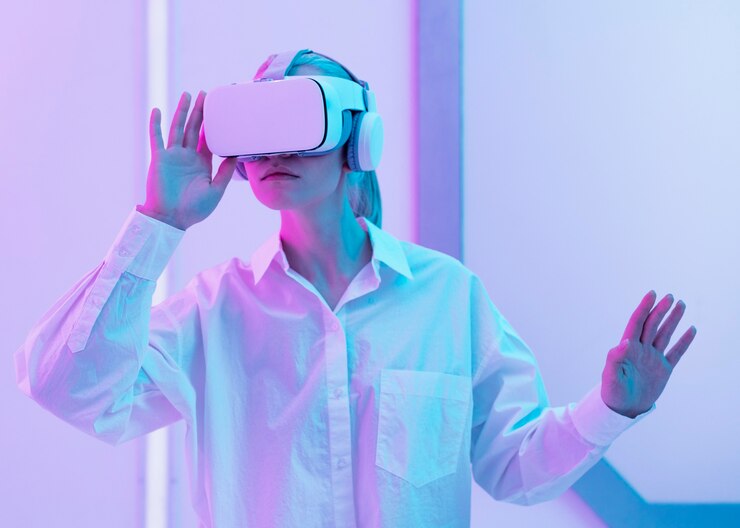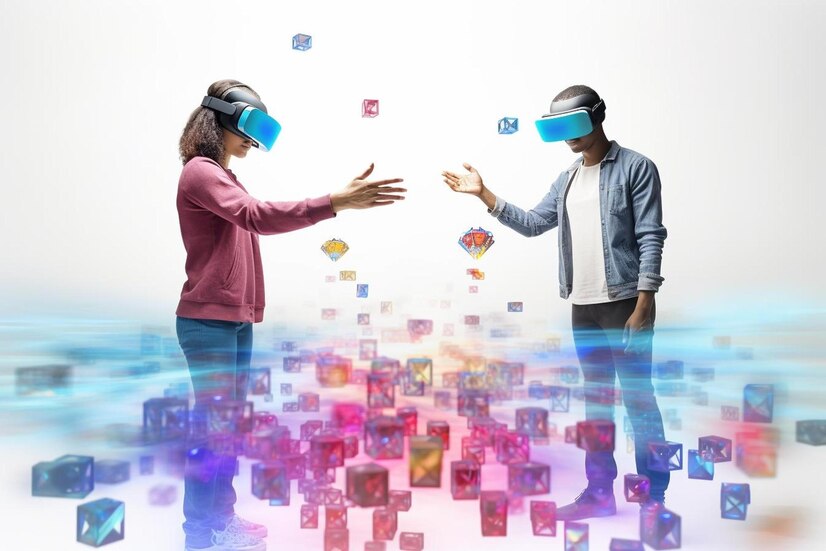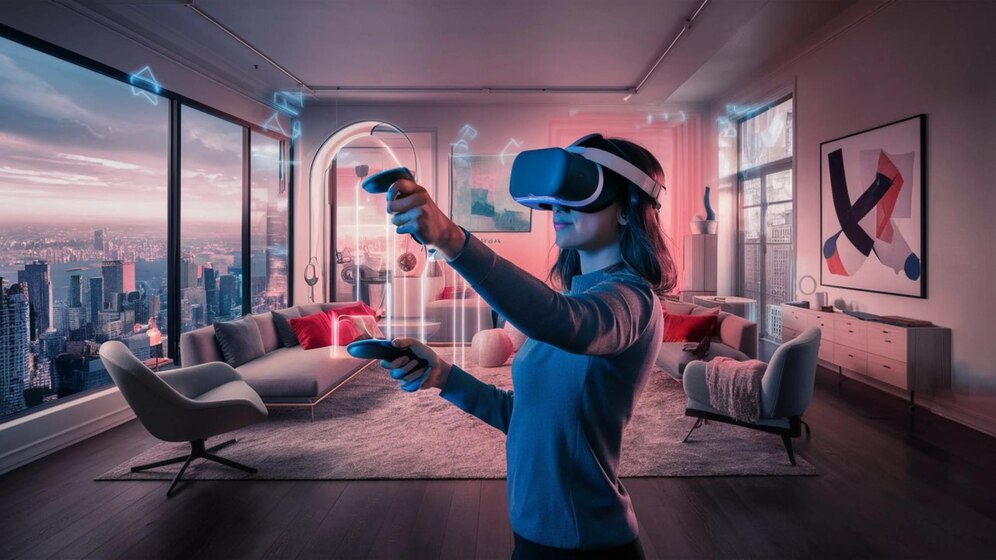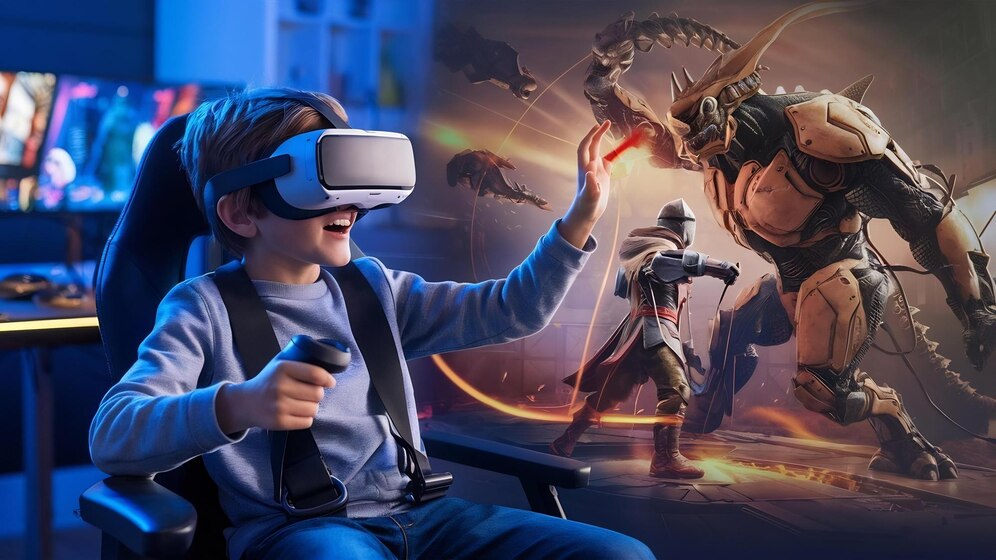How AI is Changing Game Design & Player Experience Forever!
Artificial Intelligence generates explosive changes in the modern gaming industry at a speed that has never been seen before. Games today become more immersive because AI transforms the creation of non-playable characters and enhances game graphics. Players now access AR-powered interactivity with AI-based mechanics thanks to the current developments in augmented reality technology. The paper investigates AI’s effect on designing games and its evolution of player interactions that will permanently transform video gaming entertainment. 1. AI-Driven Game Design: A New Era of Creativity Modern video games receive substantial support from Artificial Intelligence throughout their development process and design phase. The system helps developers through automatic content generation and efficiency improvement of mechanics and repetitive task automation. Through AI algorithm implementation designers build expansive open worlds coupled with responsive gameplay that shifts based on player actions and dynamic story elements. The main advancement of AI technology consists of procedural content generation (PCG). Within PCG developers obtain the capability to produce distinctive environments missions and characters automatically instead of detailed manual design work. Every play session of the game will be different because of this feature which maintains player interest. Augmented Reality (AR) reaches its peaks through AI technology by delivering simulations that enhance interactions with real-world environments for better mobile and console gaming experiences. Artificial intelligence analytics through research allows game developers to gain superior insights about how users behave in their games. Game studios use data observation to locate player behavior patterns while seeking bugs and they apply event adaptations through real-time monitoring. Better efficiency through AI tools permits developers to dedicate their efforts toward resourceful development rather than repetitive tasks so that their games achieve greater depth. 2. Enhancing Player Experience with AI Games have changed their player-to-game interaction models thanks to AI technology which generates personalized experiences. Programmed AI systems evaluate gaming behaviors to make changes in the game experience. Every gamer receives an exclusive game path through adaptive gameplay that keeps their abilities and personal preferences in mind. The main utilization of AI in gaming occurs through automatic adjustments of game challenge levels. Real-time enemy aggression along with resource availability is adjusted by AI systems in Resident Evil 4 and Left 4 Dead. Through AI NPCs become capable of delivering believable reactions according to player movements in games. The result of this feature is unpredictable gameplay patterns along with natural interactive experiences. Artificial Intelligence delivers such value to Augmented Reality by enabling perfect integration between virtual and real-world components. The machine learning capabilities of Pokémon GO along with other AI-powered AR games generate realistic game assets which adapt to the current context of the player. The adjustment capacity of AR elements toward real-world settings becomes better because of AI support which enhances user experience. 3. AI-Powered Graphics & Animation The development of realistic game visuals always held priority in gaming production yet AI advances the possibility to higher levels. Machine learning tools alongside neural networks perform real-time rendering operations in addition to carrying out automatic texture improvement and moving characters in an authentic style. DLSS is an AI-driven graphics technology developed by Nvidia which stands for Deep Learning Super Sampling. Through this technology, the image quality grows better as system performance improves to deliver high-definition graphics that maintain smooth frame rates. Through AI the generation of authentic facial movement solutions now replaces motion capture sequences thus producing naturalistic performances without physical capture needs. The rendering process of Augmented Reality (AR) experiences gains benefits through Artificial Intelligence (AI). Artificial Intelligence technology enables AR tools to merge virtual items into existing environments thus enhancing gaming realism. AI takes care of advanced rendering requirements to enable game developers to concentrate on innovative storytelling elements in their creations. 4. AI-Generated Storylines & Dialogue Artificial intelligence operates beyond graphic and gameplay developments because it transforms the way video games tell their stories. The AI-based narrative engines produce interactive story branches that create distinctive narratives for each gameplay based on player decisions. Among the most thrilling uses of AI in storytelling exists the application of Natural Language Processing (NLP). The NPC characters in Cyberpunk 2077 alongside The Elder Scrolls V: Skyrim evolve their responses depending on what players do thus generating authentic dialogue interactions. Through AI-controlled dialogue engines, programmers remove monotonous responses and shape authentic discussions based on present conditions. In AR games AI-powered narratives work as a system that boosts the level of player immersion. AI technology adjusts dialogues and quest series to match specific locations and personality patterns of individual players thus providing distinct encounters to each user. AI effectively handles huge volumes of data to maintain game narratives that remain fresh for players while also providing unexpected and deeply involving stories. 5. AI in Augmented Reality & Future of Gaming The development of Augmented Reality (AR) gaming receives its essential power from AI technology which produces more interactive and immersive gameplay sequences. Artificial Intelligence enables object detection and real-time environment mapping alongside gesture recognition for excellent implementation of virtual elements throughout physical spaces. Minecraft Earth and Harry Potter: Wizards Unite employ AI-powered AR tools that adapt gameplay depending on detected user environments. Through machine learning algorithms digital elements become capable of achieving realistic interactions with physical spaces thus connecting virtual gaming with real-life environments. The field of gaming will undergo ongoing transformation because AI and AR technology will steer its development direction. AI-generated virtual worlds along with self-teaching non-playable characters and super-quick reaction times in gameplay will transform into standard features. The prospective future of gaming shows endless possibilities because AI and AR are continuously developing themselves in unison. Contact us for more details. Frequently Asked Questions 1. AI serves as a force that enhances the development process of video games. The artistic process of game design receives automation from AI which assists developers with procedural content generation and adaptive gameplay approach design while managing non-player characters. Through its implementation developers gain the ability to construct responsive environmental systems along with intelligent enemy behaviors and customized entertainment options. Developers










